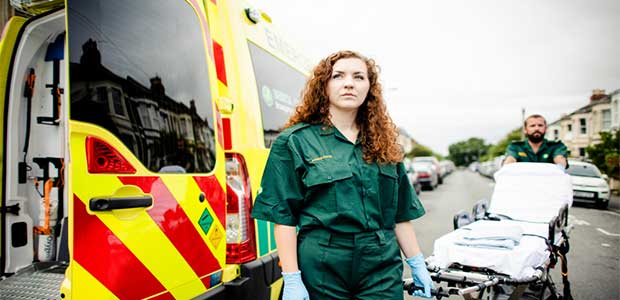
Ambulance Workers Are More Likely to Get Injured—and Assaulted—on the Job
A recent study reports that emergency response workers are much more likely to suffer injury and assault on the job. These injuries and assault are also likely largely underreported, researchers suspect.
Ambulance workers—including paramedics and Emergency Medical Technicians (EMTs)—work very dangerous jobs. They handle combative patients, have physically-demanding responsibilities, and are exposed to harmful substances every day. A recent study finds that these individuals are at a greater risk for occupational injuries and assault than workers in any other profession in the United States.
The study was conducted by a researcher at the National Institute for Occupational Safety and Health (NIOSH), part of the Centers for Disease Control Prevention. Results showed that out of every 100 EMTs and paramedics, between eight and nine are treated in the hospital for an occupational injury. That is compared to two out of every 100 workers in all other jobs.
Emergency workers have physically taxing jobs: the majority of reported EMT and paramedic injuries resulted from bodily motion activities, especially lifting patients, explains Audrey Reichard, epidemiologist at NIOSH and researcher who studied the data. These workers are often kneeling and bending—movements that make them prone to back injuries and sprains. Most of the documented injuries in the federal study happened while workers were lifting a patient.
The second most common hazard that often leads to emergency room treatment is exposure to harmful substances like blood and bodily fluids. While these ER injuries are often quickly treated, they account for about 27 percent of injuries, reports the study.
Assaults account for a much smaller portion of all injuries; however, emergency response workers are both at a higher risk of assault and likely do not report assault cases as often as they should. The rate of assaults against these workers is at least 22 times higher than all other occupations, “and the it may be much higher” considering the vast majority of these cases go unreported, said Brian Maguire, epidemiologist and former paramedic.
Some might wonder why assaults often go unreported in a dangerous profession like this one. The reason, Maguire explains, is complex. Sometimes, people assume this is an unchanging part of the job, and there’s potentially an organizational or cultural pressure to just accept it.
Reichard says her team reached a similar conclusion from their study: "Our [injury] numbers aren't huge in the violence area, but we suspect that there's a large amount of underreporting that occurs -- that EMS workers often feel like it's just part of the job," she said, "so I feel that our numbers just aren't a good representation of what's happening out there in violence."
The growing discussion on workplace safety—particularly with EMTs and paramedics—picked up traction last month when two EMTs were assaulted by a patient in Boston. A patient with a history of mental illness reportedly stabbed one EMT and sprayed the other in the eye with chemicals. Many emergency response workers have since called for stricter and more specific laws enforcing workplace safety.
This problem is not easily fixed, however. Maguire said there’s simply not enough data on effective methods to reduce workplace injuries for emergency medical workers. Many agencies with the best intentions are implementing what they think will reduce risk for personnel, but they’re doing so without data proof of what actually works.
One example is the distribution of bulletproof vests by agencies, like some in Massachusetts. Ambulance crews are given bulletproof vests to wear, but it makes activities like pulling people out of car wrecks taxing. There is no evidence to prove that these vests actually make EMTs safer, either.
Reichard says agencies should focus on investing in up-to-date technology to improve workplace safety. New technologies, however, are almost always a large cost consideration for companies. Clearly, the issues of workplace safety for emergency response personnel are far from solved.
Read more about the study and results here.